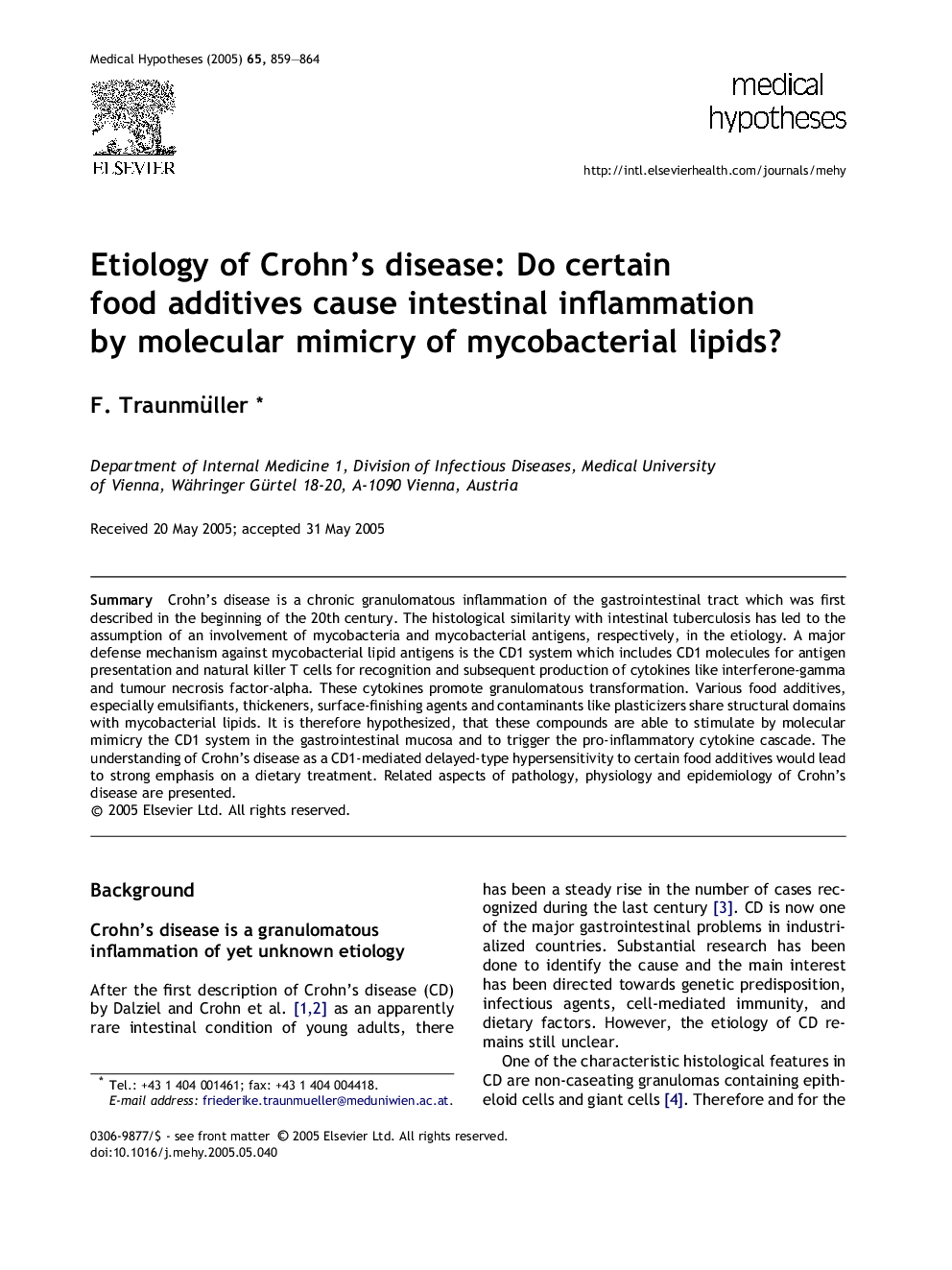| Article ID | Journal | Published Year | Pages | File Type |
|---|---|---|---|---|
| 8996622 | Medical Hypotheses | 2005 | 6 Pages |
Abstract
Crohn's disease is a chronic granulomatous inflammation of the gastrointestinal tract which was first described in the beginning of the 20th century. The histological similarity with intestinal tuberculosis has led to the assumption of an involvement of mycobacteria and mycobacterial antigens, respectively, in the etiology. A major defense mechanism against mycobacterial lipid antigens is the CD1 system which includes CD1 molecules for antigen presentation and natural killer T cells for recognition and subsequent production of cytokines like interferone-gamma and tumour necrosis factor-alpha. These cytokines promote granulomatous transformation. Various food additives, especially emulsifiants, thickeners, surface-finishing agents and contaminants like plasticizers share structural domains with mycobacterial lipids. It is therefore hypothesized, that these compounds are able to stimulate by molecular mimicry the CD1 system in the gastrointestinal mucosa and to trigger the pro-inflammatory cytokine cascade. The understanding of Crohn's disease as a CD1-mediated delayed-type hypersensitivity to certain food additives would lead to strong emphasis on a dietary treatment. Related aspects of pathology, physiology and epidemiology of Crohn's disease are presented.
Related Topics
Life Sciences
Biochemistry, Genetics and Molecular Biology
Developmental Biology
Authors
F. Traunmüller,
